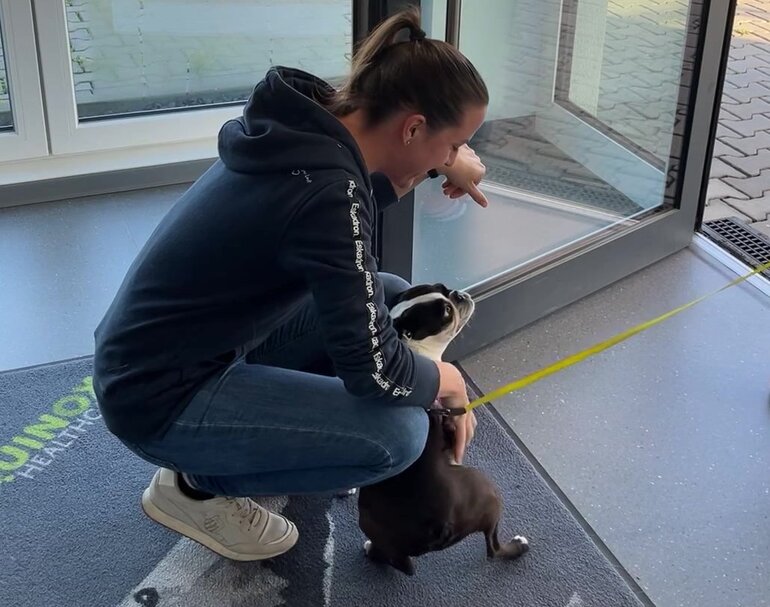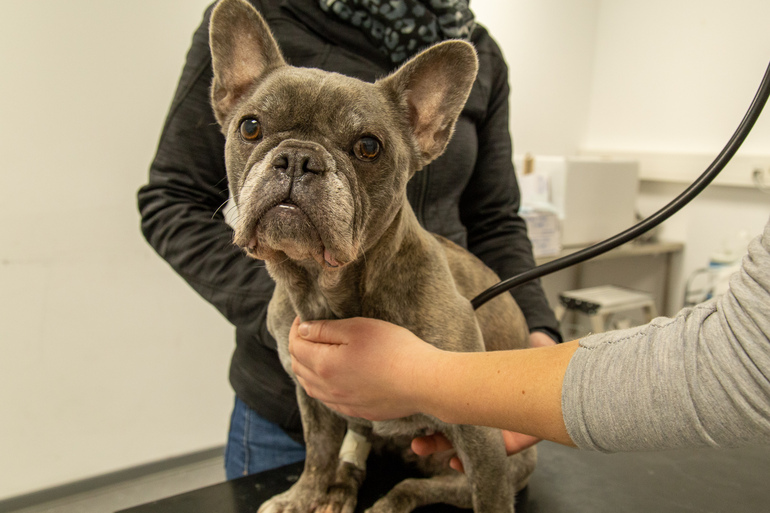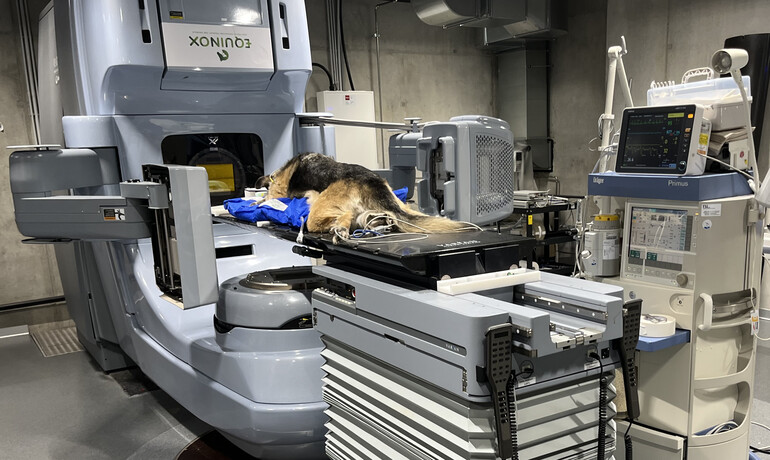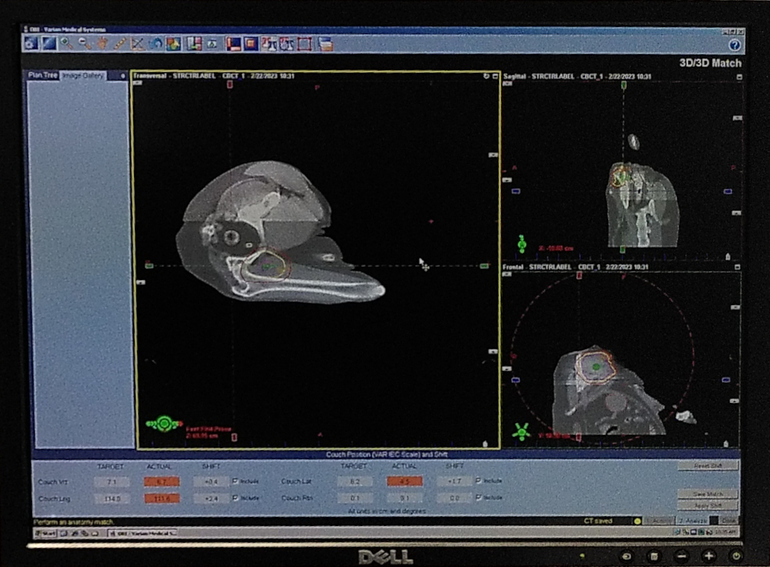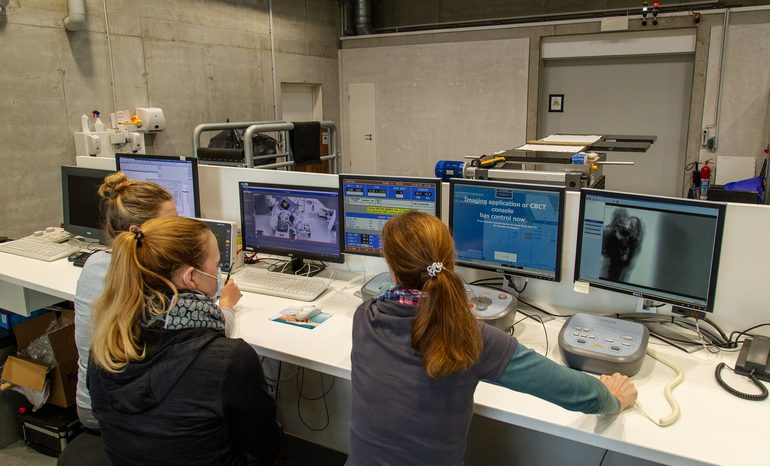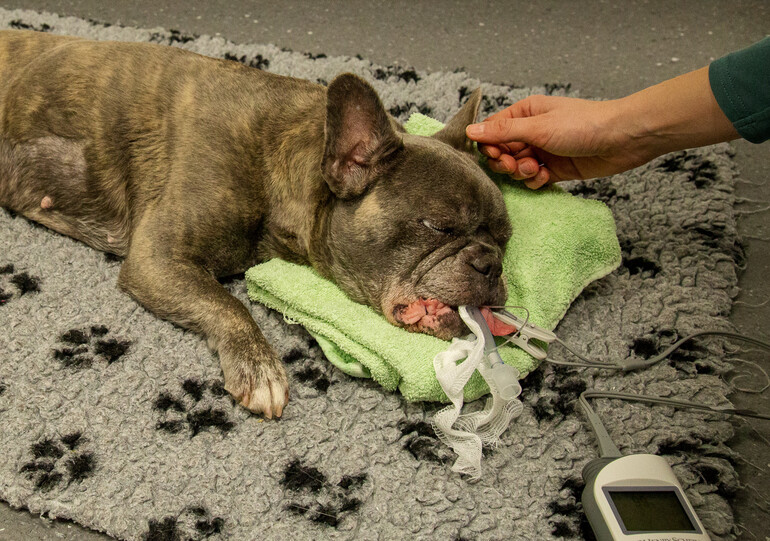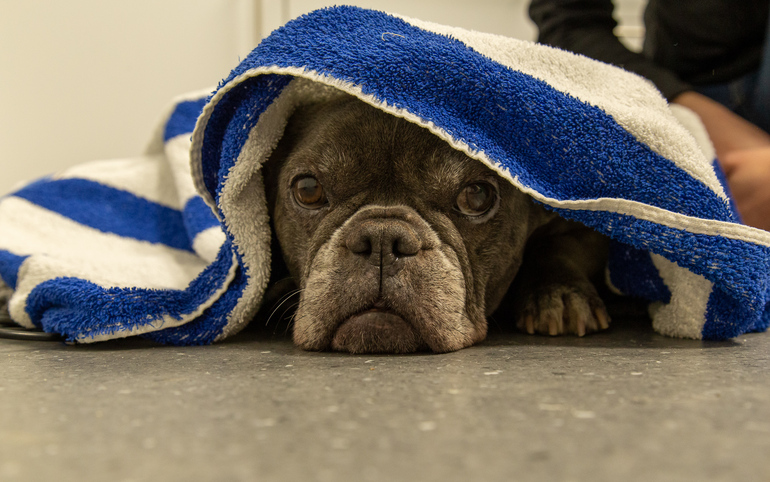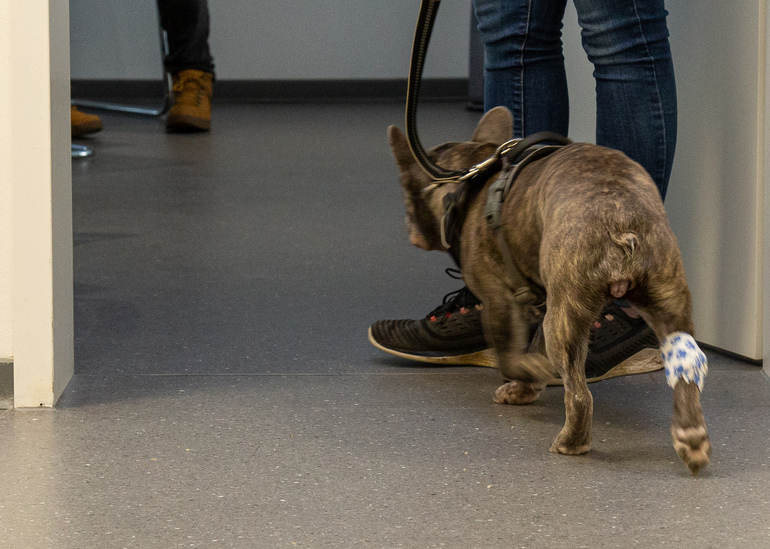Step 5: Monitoring
In the radiation room, patients are positioned in the custom-made positioning aids and connected to an anesthesia machine. Patients are monitored extensively during this process: respiratory gases are measured directly in the anesthesia machine, and in addition, other vital signs such as oxygen saturation, heart rate, and ECG are monitored continuously. Incidentally, the measurements are also transmitted externally during radiation therapy, so we can keep an eye on the situation at all times.
